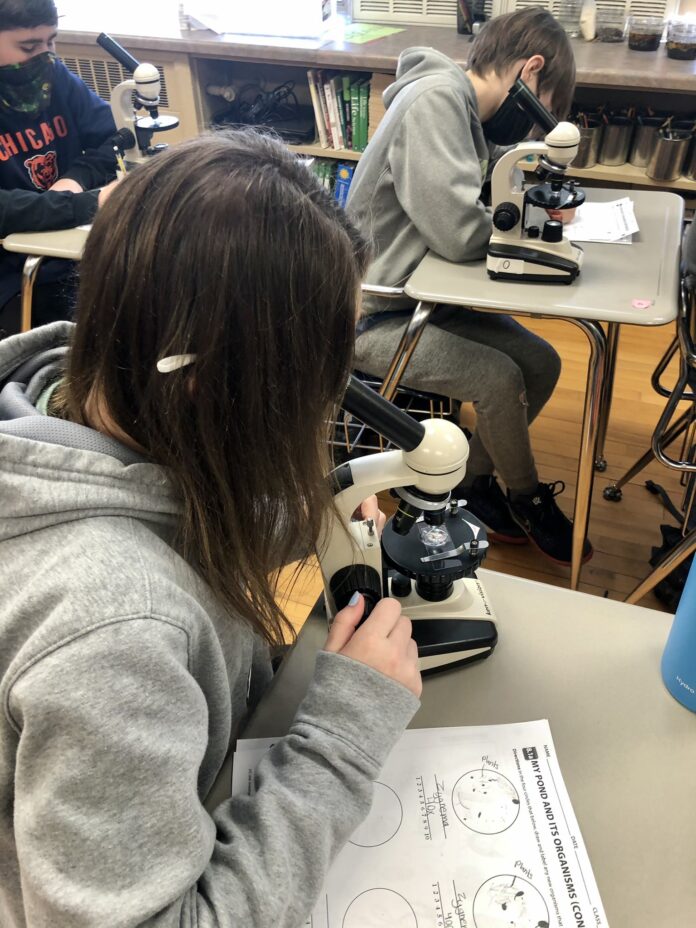
There’s life and biology teeming pretty much everywhere if you look closely enough—and students at Cullman Middle School spent the past several weeks learning that lesson up close and personal.
Cullman Middle School science teacher Erin Williams has been helping lead several seventh-grade classes through a new Alabama Math Science and Technology Initiative (AMSTI) project designed to have students investigate biodiversity and interdependence. The form this took in Cullman Middle School’s science department was several tiny homemade ponds, designed to simulate the kind of real-life environment students might find in the wild.
“We went outside to gather decomposing leaves. To build the ponds, we added a layer of rocks, then soil, then leaves and hay. Then we added water and duckweed (surface water plants) to the top,” Williams explained. “We used filtered water from the school. We also added five grains of rice as a source of nutrition. The students viewed a sample of water under the microscope and drew what they saw, which was not much at that time.”
After students created their ponds and gave them an initial assessment, they were placed near the windows for a month to allow nature to take its course—and what a difference a few weeks can make when it comes to biodiversity. The students learned it also makes a difference when it comes to smells, too.
“They came back and viewed samples of pond water under the microscope. The duckweed plants had grown on the top. We were all surprised and excited to see microorganisms swimming around in the water,” Williams said. “The students also were pretty appalled by the smell of the ponds, which led to a great conversation about the purpose of decaying organic matter in an ecosystem food web.”
Students were then given pictures of various microorganisms, along with their names, and had a chance to identify the microorganisms present in their mini-pond samples. The project was used to teach concepts including ecosystems, conservation of matter and energy and photosynthesis.
Cullman City Schools has more than 3,000 students and encompasses Cullman High School (Grades 9-12), Cullman Middle School (Grades 7-8), East Elementary School (Grades 2-6), West Elementary School (Grades 2-6), and Cullman City Primary School (Grades K-1). Cullman City Schools also hosts the Cullman City Head Start Program. Cullman City Schools consistently ranks as one of the top school systems in College ACT scores in the state of Alabama.




















